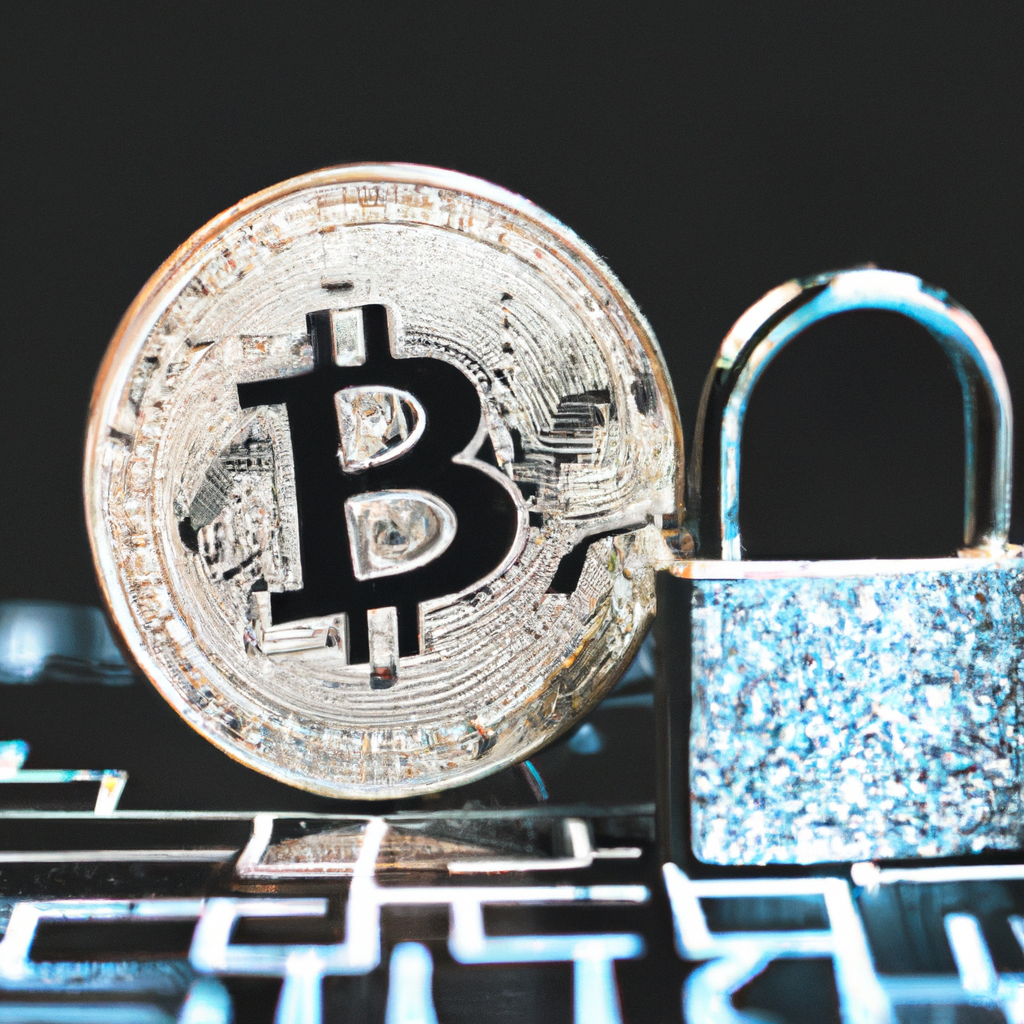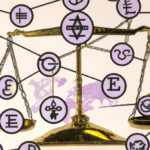Cryptocurrency has gained immense popularity in recent years, revolutionizing the way we perceive and engage in financial transactions. Despite its numerous benefits, the rising use of cryptocurrency has also brought about security concerns that cannot be ignored. As the value and adoption of cryptocurrencies continue to grow, so do the risks associated with their use. This article delves into the pressing security issues that surround cryptocurrency, exploring the vulnerabilities and threats faced by users and the industry as a whole.
- 1. Introduction
- 1.1. Definition of cryptocurrency
- 1.2. Rise in popularity
- 1.3. Importance of security
- 2. Common Security Issues
- 2.1. Hacking and theft
- 2.2. Phishing attacks
- 2.3. Malware and ransomware
- 2.4. Ponzi schemes
- 2.5. Insider threats
- 3. Preventive Measures
1. Introduction
Cryptocurrency has gained significant popularity in recent years, revolutionizing the way people perceive and use money. With its decentralized nature and promise of anonymity, it has attracted a large number of investors and users. However, along with its increasing popularity, there has been a rise in security issues surrounding cryptocurrency. This article aims to explore the various security concerns that plague the world of cryptocurrency and shed light on the potential risks involved.
1.1. Definition of cryptocurrency
Cryptocurrency refers to a digital or virtual form of currency that utilizes cryptography for secure financial transactions, control the creation of new units, and verify the transfer of assets. Unlike traditional currencies issued by central banks, cryptocurrencies are decentralized and operate on a technology called blockchain. This technology ensures transparency, immutability, and security of transactions, making it difficult to counterfeit or manipulate digital currencies.
Cryptocurrencies, such as Bitcoin, Ethereum, and Ripple, have gained popularity in recent years due to their potential for decentralized and borderless transactions. They offer users a way to store and transfer value without the need for intermediaries like banks, which can often be slow and expensive.
While cryptocurrencies have opened up new opportunities for innovation and financial inclusion, they have also brought about certain security issues. As the value and popularity of cryptocurrencies have soared, so too have the attempts by hackers and cybercriminals to exploit vulnerabilities in the system. This article will explore some of the rising security concerns associated with cryptocurrency and the measures being taken to address them.
1.2. Rise in popularity
Cryptocurrency has gained immense popularity in recent years, revolutionizing the way we perceive and handle financial transactions. With its decentralized nature and enhanced security features, it has attracted a significant number of users worldwide. However, as the popularity of cryptocurrency rises, so do the security issues associated with it. This article delves into the rising security concerns that plague the world of cryptocurrency and explores the potential risks that users need to be aware of.
1.3. Importance of security
As the popularity and usage of cryptocurrencies continue to grow, so do the security concerns surrounding them. Cryptocurrency transactions and investments are becoming more prevalent, attracting both legitimate users and malicious actors. This article will explore the rising security issues associated with cryptocurrencies and emphasize the importance of implementing robust security measures to protect users and their digital assets.
2. Common Security Issues
Cryptocurrency has gained significant popularity in recent years, but it is not without its security concerns. As the value of cryptocurrencies such as Bitcoin and Ethereum continues to rise, so does the interest of hackers and cybercriminals. This article will explore some of the common security issues associated with cryptocurrency.
One of the primary security concerns is wallet vulnerabilities. Cryptocurrency wallets store the public and private keys required to access and manage digital assets. However, these wallets can be susceptible to hacking, phishing attacks, and malware. If a hacker gains access to a user’s wallet, they can easily steal their funds without any trace.
Another security issue is related to the exchanges where cryptocurrencies are bought and sold. These exchanges act as intermediaries between buyers and sellers, but they have been targeted by hackers in the past. Cybercriminals exploit vulnerabilities in the exchange’s security infrastructure to gain unauthorized access and steal users’ funds.
Additionally, the use of weak passwords or reusing passwords across multiple platforms poses a significant security risk. Many users fail to create strong and unique passwords, making it easier for hackers to guess or crack them. Moreover, if a user’s password is compromised on one platform, it can potentially jeopardize their cryptocurrency holdings on other platforms as well.
Furthermore, the emergence of fake cryptocurrency projects and initial coin offerings (ICOs) has become a breeding ground for scams. Fraudsters create fake websites and projects to lure unsuspecting investors, promising high returns and quick profits. However, once the investors deposit their funds, the scammers disappear, leaving them empty-handed.
Lastly, the decentralized nature of cryptocurrencies also presents security challenges. While decentralization offers benefits such as enhanced privacy and censorship resistance, it also makes it difficult to reverse transactions or recover stolen funds. Once a cryptocurrency transaction is executed, it becomes nearly impossible to alter or retrieve the funds.
In conclusion, the rising popularity of cryptocurrencies has brought about a surge in security issues. From wallet vulnerabilities and exchange hacks to weak passwords and fraudulent projects, users must remain vigilant and take necessary precautions to safeguard their digital assets.
2.1. Hacking and theft
Hacking and theft are two major concerns when it comes to the security of cryptocurrencies. As the popularity and value of digital currencies like Bitcoin and Ethereum continue to rise, so does the interest of hackers and cybercriminals. These malicious actors are constantly looking for vulnerabilities in cryptocurrency systems to exploit and steal funds.
One common method of hacking is through phishing attacks, where criminals trick users into revealing their private keys or login credentials. By impersonating legitimate cryptocurrency platforms or sending deceptive emails, hackers can gain access to users’ wallets and steal their digital assets.
Another prevalent security issue is the vulnerability of cryptocurrency exchanges. These online platforms where users can buy, sell, and trade cryptocurrencies often become targets for hackers. If successful, these attacks can result in the theft of millions or even billions of dollars worth of digital currencies.
Furthermore, ransomware attacks have also become a significant concern for cryptocurrency users. By encrypting valuable data or locking users out of their accounts, hackers demand ransom payments in cryptocurrencies to restore access. Failure to comply can result in permanent loss of funds.
To combat these security issues, individuals and businesses must take proactive measures. This includes using secure and reputable cryptocurrency wallets, enabling two-factor authentication, regularly updating software, and being cautious of suspicious emails or links. Additionally, cryptocurrency exchanges should implement robust security protocols and regularly audit their systems to identify and patch vulnerabilities.
2.2. Phishing attacks
Phishing attacks are among the common security issues that plague the world of cryptocurrency. These attacks involve the use of deceptive tactics to trick individuals into revealing their sensitive information, such as passwords or private keys. Phishers often utilize fraudulent emails, websites, or messages to appear legitimate and trustworthy. Once unsuspecting users provide their confidential details, the attackers can gain unauthorized access to their cryptocurrency wallets, leading to potential financial losses.
In recent years, phishing attacks targeting cryptocurrency holders have been on the rise. Cybercriminals take advantage of the increasing popularity and value of cryptocurrencies, making them attractive targets for theft. The anonymous nature of cryptocurrency transactions and the irreversible nature of blockchain transactions make it difficult to trace and recover stolen funds.
To protect oneself from phishing attacks, it is crucial to exercise caution and follow best security practices. This includes being skeptical of unsolicited emails or messages asking for personal information, double-checking the legitimacy of websites before entering any sensitive data, and using secure and trusted cryptocurrency wallets. Additionally, enabling two-factor authentication and keeping software and security measures up to date can significantly reduce the risk of falling victim to phishing attacks in the cryptocurrency realm.
2.3. Malware and ransomware
Malware and ransomware are two common security issues that pose a significant threat to cryptocurrency. Malware refers to malicious software designed to disrupt, damage, or gain unauthorized access to computer systems. It can be injected into cryptocurrency wallets or exchanges, allowing hackers to steal sensitive information or control users’ funds. Ransomware, on the other hand, is a type of malware that encrypts users’ data and demands a ransom payment in cryptocurrency to restore access. It can infect computers or networks, causing significant financial loss and disruption for cryptocurrency users. Both malware and ransomware attacks have been on the rise, targeting individuals, businesses, and even cryptocurrency exchanges, highlighting the need for robust security measures to protect against these threats.
2.4. Ponzi schemes
Ponzi schemes are one of the common security issues associated with cryptocurrencies. These schemes involve fraudulent investment operations that promise high returns with little to no risk. In a typical Ponzi scheme, early investors are paid with funds from new investors, creating the illusion of profitability. However, as the number of new investors diminishes, the scheme eventually collapses, leaving many participants with significant financial losses.
Cryptocurrencies provide an attractive platform for Ponzi schemes due to their decentralized nature and lack of regulation. Scammers exploit the anonymity and pseudonymity offered by cryptocurrencies to attract unsuspecting individuals. They often use social media, online forums, or even word-of-mouth referrals to lure in new investors.
To protect oneself from falling victim to a Ponzi scheme, it is essential to exercise caution and conduct thorough research before investing in any cryptocurrency project. It is crucial to verify the legitimacy of the project, its team members, and their track record. Additionally, one should be wary of investment opportunities that promise unusually high returns or use complex investment strategies.
As the popularity of cryptocurrencies continues to rise, it is important for individuals to be aware of the security risks associated with these digital assets. By staying informed and vigilant, users can better protect themselves from falling prey to Ponzi schemes and other fraudulent activities.
2.5. Insider threats
Insider threats pose a significant security concern in the world of cryptocurrency. These threats refer to individuals who have authorized access to sensitive information or systems within an organization but exploit that access for malicious purposes. As cryptocurrencies have gained popularity and value, the temptations for insiders to engage in fraudulent activities have also increased.
Insiders can take advantage of their positions to manipulate transactions, steal digital assets, or compromise the integrity of the cryptocurrency network. They may have access to private keys, wallets, or trading platforms, allowing them to execute unauthorized transactions or siphon funds unnoticed.
One common type of insider threat is an employee with privileged access. This could be a developer, system administrator, or anyone with elevated permissions within a cryptocurrency organization. Their knowledge and access make it easier for them to engage in fraudulent activities without raising suspicion.
Another form of insider threat is a disgruntled employee or former employee seeking revenge or personal gain. These individuals may intentionally disrupt operations, leak sensitive information, or sabotage the cryptocurrency system out of spite.
To mitigate insider threats, cryptocurrency organizations should implement strict access controls, regularly monitor and audit user activities, and enforce separation of duties. It is crucial to educate employees about the risks and consequences of insider threats and encourage them to report any suspicious behavior.
Overall, insider threats present a significant challenge in maintaining the security of cryptocurrency systems. By implementing robust security measures and promoting a culture of transparency and accountability, organizations can better protect themselves against these threats and safeguard the integrity of the cryptocurrency ecosystem.
3. Preventive Measures
Cryptocurrency has gained immense popularity over the years, but with its rise, so have the security issues associated with it. As digital currencies become more widely accepted and used in various transactions, it is important to take preventive measures to safeguard your investments and personal information. Here are some key measures to consider:
1. Use reliable and secure cryptocurrency exchanges: When buying or trading cryptocurrencies, it is crucial to choose reputable and trustworthy exchanges. Look for exchanges that have a strong track record of security and have implemented robust measures to protect users’ funds.
2. Enable two-factor authentication (2FA): Adding an extra layer of security to your cryptocurrency accounts is essential. Enabling 2FA requires users to provide an additional piece of information, such as a unique code sent to their mobile device, along with their password. This helps prevent unauthorized access even if someone manages to obtain your login credentials.
3. Keep software and wallets up to date: Developers regularly release updates and patches to fix security vulnerabilities in cryptocurrency software and wallets. It is crucial to install these updates promptly to ensure your digital assets are protected from potential threats.
4. Implement strong passwords and secure storage: Choosing a strong and unique password for your cryptocurrency accounts is vital. Avoid using common phrases or easily guessable passwords. Additionally, consider storing your passwords in a secure password manager to prevent them from being compromised.
5. Be cautious of phishing attempts: Phishing attacks are common in the cryptocurrency space. Always double-check the authenticity of emails, links, and websites before providing any personal or financial information. Avoid clicking on suspicious links or downloading attachments from unknown sources.
6. Use hardware wallets for long-term storage: If you plan to hold cryptocurrencies for an extended period, consider using hardware wallets. These physical devices provide an extra layer of security by keeping your private keys offline and away from potential online threats.
By following these preventive measures, you can minimize the risks associated with the rising security issues of cryptocurrency. Stay informed about the latest security practices and ensure that your investments in digital assets remain safe and secure.
3.1. Strong passwords and two-factor authentication
In order to safeguard your cryptocurrency investments, it is crucial to implement strong passwords and utilize two-factor authentication. These preventive measures can significantly enhance the security of your digital assets.
Strong passwords are the first line of defense against unauthorized access. When creating a password, it is important to avoid common and easily guessable phrases or combinations. Instead, opt for long and complex passwords that include a mix of uppercase and lowercase letters, numbers, and special characters. Additionally, refrain from reusing passwords across different platforms, as this can pose a significant risk.
Two-factor authentication (2FA) adds an extra layer of security to your cryptocurrency accounts. This authentication method requires users to provide two forms of identification before accessing their accounts. Typically, this involves a combination of something the user knows (such as a password) and something the user possesses (such as a unique code sent to their mobile device). By enabling 2FA, even if an attacker manages to obtain your password, they would still need the second factor to gain access.
Implementing strong passwords and enabling two-factor authentication can greatly reduce the risk of unauthorized access to your cryptocurrency holdings. These preventive measures are essential in the face of rising security issues in the cryptocurrency space.
3.2. Using reputable wallets and exchanges
Using reputable wallets and exchanges is crucial when dealing with cryptocurrencies. As the popularity and value of cryptocurrencies rise, so does the risk of security issues. By using reputable wallets and exchanges, you can minimize the chances of falling victim to scams, hacks, or theft.
When choosing a wallet, opt for well-established providers that have a strong track record in security. Look for wallets that offer features like two-factor authentication, encryption, and cold storage for added protection of your digital assets.
Similarly, when selecting an exchange to trade or buy cryptocurrencies, it is important to choose a platform that prioritizes security. Research and read reviews about the exchange to ensure it has a good reputation for safeguarding user funds.
Preventive measures play a vital role in mitigating security risks associated with cryptocurrency. Apart from using reputable wallets and exchanges, it is also essential to keep your wallet software and operating system updated with the latest security patches. Additionally, never share your wallet’s private keys or seed phrases with anyone and be cautious of phishing attempts or suspicious links.
By taking these preventive measures and being proactive in your approach to cryptocurrency security, you can significantly reduce the likelihood of falling victim to security issues and protect your valuable digital assets.
3.3. Regular software updates
Regular software updates are crucial in ensuring the security of cryptocurrency. As the use of digital currencies continues to rise, so do the security threats associated with them. Hackers are constantly finding new ways to exploit vulnerabilities in cryptocurrency systems, making it essential for developers to stay ahead of these threats.
By regularly updating the software used in cryptocurrency platforms, developers can patch any existing vulnerabilities and strengthen the overall security of the system. These updates often include bug fixes, security patches, and improvements to encryption algorithms.
Additionally, regular software updates help in preventing any potential security breaches caused by outdated software. As new security measures are implemented with each update, the chances of unauthorized access or theft of cryptocurrency funds are significantly reduced.
In conclusion, regular software updates play a vital role in mitigating the rising security issues of cryptocurrency. By staying proactive and keeping up with the latest updates, developers can ensure the safety and integrity of digital currencies.
3.4. Educating users about scams
Educating users about scams is crucial in the context of the rising security issues of cryptocurrency. As the popularity and adoption of cryptocurrencies increase, so do the risks associated with scams and fraudulent activities. It is essential for users to be aware of the various scams prevalent in the cryptocurrency space to protect their investments and personal information.
One common scam is phishing, where scammers attempt to obtain sensitive information, such as login credentials or private keys, by impersonating legitimate websites or services. Users should always verify the authenticity of websites or platforms before entering any personal information or making transactions.
Another scam to be wary of is Ponzi schemes, where scammers promise high returns on investments but rely on new investors’ funds to pay previous investors. Such schemes are unsustainable and often collapse, causing significant financial losses.
Additionally, users should be cautious of fake initial coin offerings (ICOs) and investment opportunities that promise guaranteed profits. It is important to thoroughly research and evaluate any cryptocurrency project or investment opportunity before committing funds.
Furthermore, users should be mindful of social engineering tactics, where scammers manipulate individuals into revealing sensitive information or performing unauthorized actions. Common tactics include impersonating influential figures in the cryptocurrency community or creating a sense of urgency to prompt immediate action.
To protect themselves from scams, users should utilize strong and unique passwords for their cryptocurrency accounts, enable two-factor authentication, and regularly update their software and wallets. It is also advisable to use reputable and secure cryptocurrency exchanges and wallets.
By educating users about scams and preventive measures, we can collectively combat the rising security issues of cryptocurrency and create a safer environment for all participants in the digital economy.
3.5. Secure cold storage
One of the most important aspects of ensuring the security of cryptocurrencies is through secure cold storage. Cold storage refers to the practice of keeping cryptocurrency assets offline, away from internet-connected devices. This method provides an additional layer of protection against unauthorized access and hacking attempts.
To implement secure cold storage, there are several preventive measures that can be taken. Firstly, hardware wallets can be used to store cryptocurrencies. These wallets are physical devices that securely store private keys, which are needed to access and transfer cryptocurrencies. By keeping the private keys offline, the risk of them being compromised is significantly reduced.
Another preventive measure is to use multi-signature wallets. These wallets require multiple signatures, often from different devices or individuals, to authorize transactions. This adds an extra level of security by ensuring that no single person or device can access and control the funds.
Additionally, regular backups of wallet data should be made and stored securely. This ensures that even if a device is lost, stolen, or damaged, the wallet information can be easily recovered. It is important to store backups in multiple secure locations to minimize the risk of data loss.
Furthermore, strong passwords and two-factor authentication (2FA) should be utilized to protect wallets and accounts. Strong passwords should be unique and complex, incorporating a combination of letters, numbers, and symbols. 2FA adds an extra layer of security by requiring a secondary verification, such as a code sent to a mobile device, in addition to the password.
Lastly, regular software updates and patches should be applied to ensure that wallets and devices are protected against known vulnerabilities. Keeping the software up to date helps to address any potential security flaws and ensures that the latest security measures are in place.
By implementing these preventive measures, individuals and organizations can enhance the security of their cryptocurrency holdings and mitigate the risks associated with the rising security issues of cryptocurrency.
Conclusion
In conclusion, the rising security issues of cryptocurrency highlight the need for robust measures to protect digital assets. As the popularity of cryptocurrencies continues to grow, so does the risk of cyber attacks and fraud. It is crucial for individuals and businesses to stay vigilant and implement strong security protocols to safeguard their investments and transactions. Additionally, regulatory bodies must work closely with industry experts to develop comprehensive frameworks that address the unique challenges posed by cryptocurrencies. By taking proactive steps to enhance security, we can ensure a safer and more secure future for the world of digital currencies.





